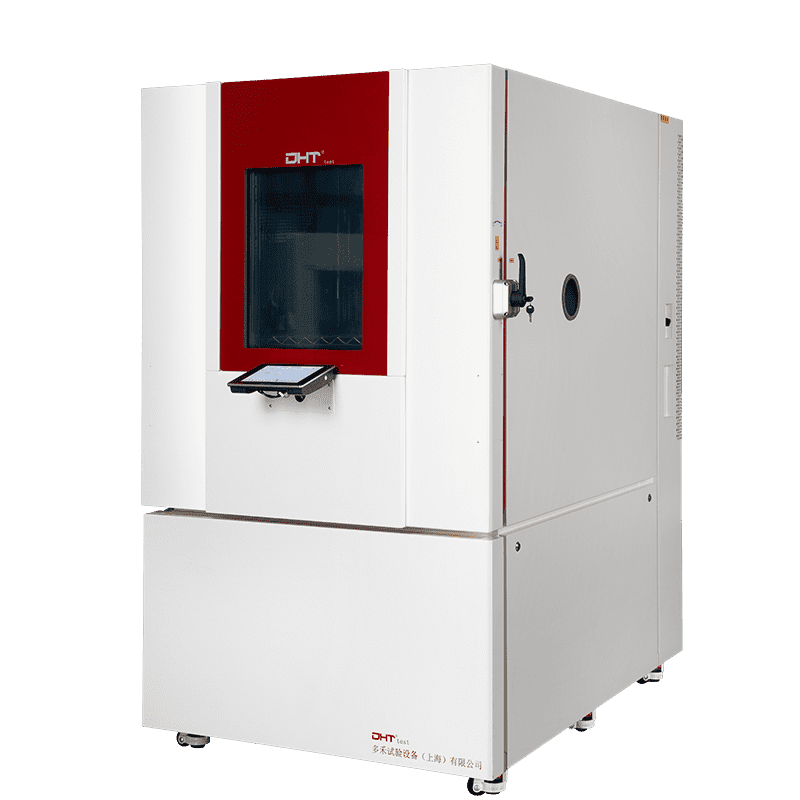Written by Robin
Senior Engineer, Doaho Test (DHT®)
According to ISO 50001 energy audit data, approximately 30% of laboratory electricity consumption is attributed to environmental testing equipment, with inefficient operation accounting for up to 45% of unnecessary energy usage (Source: TÜV Süd 2024 Energy Efficiency Report). This not only increases operational costs but also impacts the long-term stability of equipment and the repeatability of test results.
In modern reliability validation systems, the environmental testing chamber plays a critical role in ensuring product quality and regulatory compliance by accurately simulating multi-dimensional environmental stresses such as temperature, humidity, vibration, and low pressure. However, as testing durations extend and test conditions become more complex, energy consumption is emerging as a significant concern.
This article explores how to effectively reduce energy usage and control testing costs without compromising test accuracy and reliability—focusing on equipment selection, test program design, preventive maintenance, and system-level energy management.
Equipment Selection: Energy Savings Begin with Precise Technical Matching
Energy efficiency starts with selecting the right equipment. Over-specification and mismatched parameters are key contributors to unnecessary energy waste.
The Real Value of Energy Efficiency Certifications
Prioritize equipment that meets ISO 50001 Energy Management System and Superior Energy Performance (SEP) certifications—not just basic CE or RoHS compliance. For example, a system with a Coefficient of Performance (COP) ≥ 3.2 can reduce energy consumption by 18%–25% compared to conventional units, resulting in significant long-term savings.
Volume Matching Based on Engineering Calculations
Many users select equipment based on the maximum specimen size, leading to excessive chamber volume and wasted air-conditioning energy. According to IEC 60068-2-1 / 2-38, the recommended formula is:
Test chamber volume ≥ 3–5 × total specimen volume
This ensures proper airflow circulation, uniform temperature and humidity distribution, and prevents energy loss due to over-conditioning.
Technological Optimization of Core Components
-
Variable-frequency compressor system: Equipped with a PID control algorithm to dynamically regulate refrigerant flow, reducing start-stop losses by over 40% and supporting energy-saving operation modes.
-
Double-layer vacuum-coated viewing windows: Offer over 70% lower thermal conductivity than single-pane glass, effectively minimizing heat transfer loss.
-
Intelligent standby mode: Enables deep sleep mode when idle, with power consumption below 0.5W (compliant with IEC 62301:2011 Class A), ideal for overnight or intermittent test pauses.
Testing Operation: Identifying Energy Control Points in Program Design
In addition to hardware efficiency, the scientific design of test programs directly affects energy consumption.
Optimized Temperature Profile Design
-
Staged temperature transitions: For large fluctuations (e.g., -40°C ↔ 80°C), split the profile into stages (e.g., -40°C → 25°C → 80°C) to reduce compressor load and avoid system overload.
-
Rate control guidelines: Only use >10°C/min fast ramp rates when required by standards such as JESD22-A104B. For general reliability testing, ramp rates of 3–5°C/min balance efficiency with performance.
Practical Measures to Reduce Thermal Loss
-
Remote thermal monitoring: Use infrared thermal imaging tools (e.g., FLIR T540) instead of opening the chamber door to inspect samples. This avoids temperature spikes and reduces system compensation cycles.
-
Air curtain system: A 0.3 m/s vertical airflow shield prevents ambient air intrusion when the door is opened, minimizing temperature and humidity disturbances.
Energy-Saving Humidity Control Techniques
Humidity regulation is often overlooked as a major energy drain. Traditional continuous humidification consumes both water and electricity and can lead to scale buildup and clogging.
Replace with saturated steam injection, which activates only when humidity drops beyond ±3%RH of the setpoint. This method saves up to 50% water compared to mist systems and provides faster, more stable humidity control.
Preventive Maintenance: Ensuring Ongoing Energy Efficiency
Energy efficiency is not a one-time effort but relies on a well-maintained system throughout its lifecycle.
Monthly Checks
-
Condenser fin cleaning: Ensure dust buildup is under 0.5mm to maintain efficient heat exchange.
-
Door seal integrity test: Use a 0.1mm feeler gauge to check airtightness, preventing thermal leakage.
Quarterly Maintenance
-
Calibration of Pt100 temperature sensors: Replace any with deviations exceeding ±0.3°C to prevent overcompensation and energy waste.
-
Compressor lubricant replacement: Use high-performance oil with a viscosity index (VI) ≥ 160 to reduce mechanical wear and energy consumption.
Structural Optimization Opportunities
For large Walk-in Chambers, consider replacing conventional polyurethane insulation with VIP (Vacuum Insulated Panels). This reduces the thermal conductivity from 0.022 W/(m·K) to 0.007 W/(m·K)—a 300% improvement in insulation performance, substantially lowering heat loss.
System-Level Energy Management: Building a Digital Efficiency Framework
Advanced energy-saving strategies extend beyond individual equipment, requiring system-level optimization and intelligent energy orchestration.
-
Sub-metering systems: Monitor energy consumption by subsystem (cooling, humidification, lighting, fans) to identify high-consumption areas.
-
EMS (Energy Management System) integration: Connect with MES/LIMS platforms to link testing schedules with real-time energy data, enabling predictive energy planning and load optimization.
-
AI-driven adaptive load control: Use machine learning algorithms to forecast test loads and dynamically adjust power output for on-demand energy delivery.
Conclusion: Energy Efficiency Is an Extension of Precision Environmental Control
True energy savings should never come at the cost of test accuracy. Rather, they represent a deeper command of environmental simulation technology and holistic system design.
When companies incorporate energy consumption metrics of environmental testing chambers into their Life Cycle Cost (LCC) models, they will realize:
-
Reducing energy usage by 1 kWh can improve test data confidence by 0.2% due to increased system stability.
-
Cutting 1 ton of CO₂ emissions can decrease equipment failure rates by 3.7%, thanks to better thermal stress control.
Energy efficiency is not just about cost savings—it’s a professional commitment to precise environmental replication and sustainable, reliable testing.


